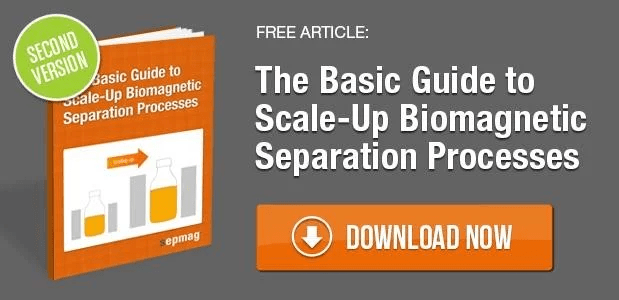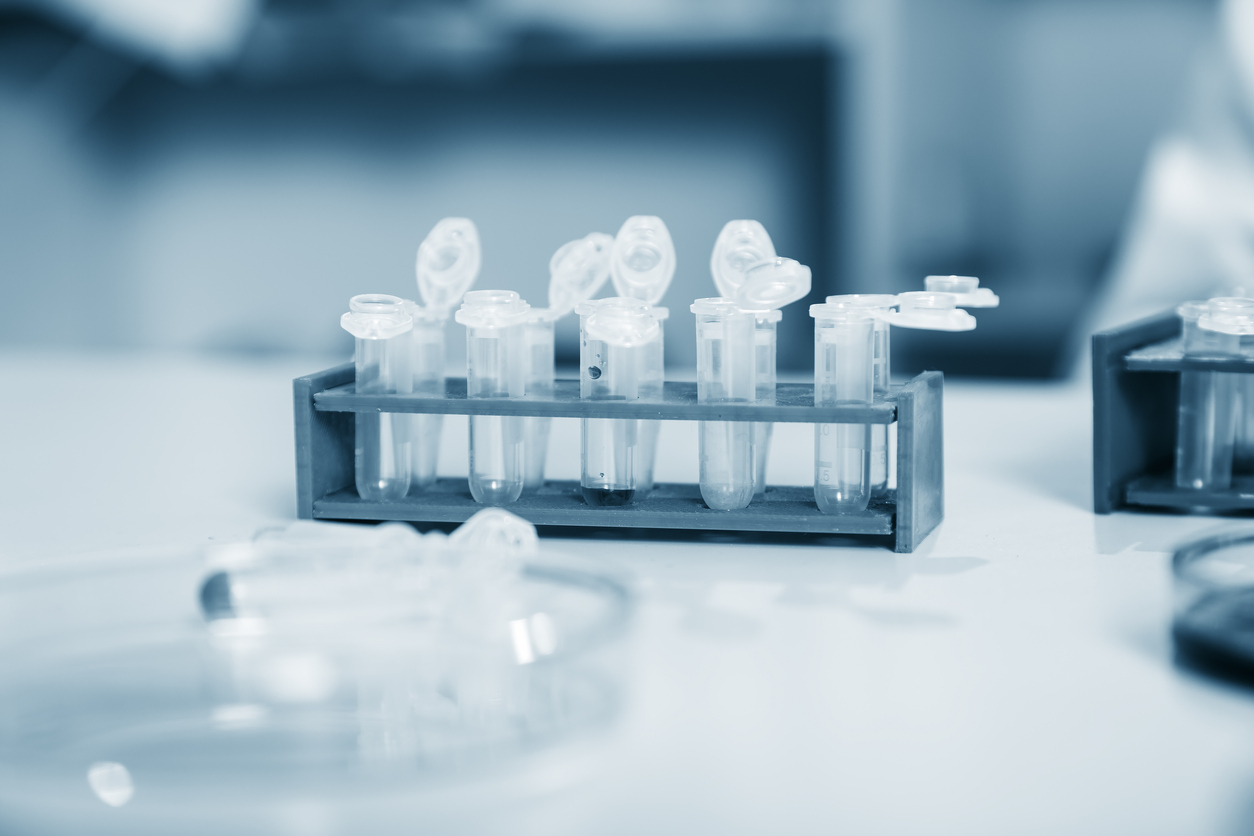In vitro Diagnostic (IVD) assays are used to diagnose infection or disease by specifically targeting a unique surface antigen or DNA sequence. IVD assays can be used to monitor a person’s overall health or to diagnose, treat, or prevent diseases. Magnetic beads have been developed to aid in molecular diagnostics, and provide the great advantage of simple manipulation via a magnet. In nucleic acid detection, magnetic beads act as a capture support for fast, easy, biomolecule separation. The surfaces of magnetic beads can be modified with IVD coatings for differing applications to allow for the specific identification and capture of target microbes. Magnetic IVD coatings can enhance the sensitivity and specificity of detection for the rapid diagnosis of a disease, point of care use, or for the quantitation of a specific microbe in a research setting.
IVD Coatings Help Magnetic Beads Bind Proteins or Nucleic Acids
Typical examples of IVD systems involve specific identification of either surface proteins (when the microbial cell is intact) or specific DNA or mRNA sequences (when the microbial cell is lysed). In general, magnetic beads are first coated with silica or a polymer matrix. Magnetic beads with a polymeric layer can increase their stability, protect their surfaces from oxidation and reduce aggregation in the absence of a magnetic force. Then, functional groups are chemically attached to this surface to help build up the IVD coating. Many modern techniques may also couple fluorescent or chemiluminescent probes onto the magnetic IVD coating. Microfluidic channels and lab-on-a-chip devices will continue to advance these techniques throughout the next decade. The key to making this happen is to understand what kinds of IVD coatings can be used to coat magnetic beads.
Common IVD Coating for Magnetic Beads
Magnetic beads can be coated on their surface with certain IVD coatings that form covalent links to minimize non-specific binding problems and reduce the background interference. Magnetic IVD coatings can also be coated with chemical groups to allow for increasingly stable, covalent links, coupling of antibodies to magnetic beads as well as the target molecule. Alternatively, some IVD coatings are biofunctionalized materials. The IVD coatings non-covalently bind molecules to magnetic beads with an extremely high affinity, and because of which have found increased use in molecular research. Some common examples of IVD coatings and their targets (though not all inclusive) are listed below.
|
Magnetic Beads Surface Functional Groups |
|
|
IVD Coating |
Targets |
|
Carboxyl groups |
Primary amino groups in proteins, peptides, nucleic acids and oligonucleotides. |
|
Amine groups |
Carbohydrate moieties and nucleic acids. |
|
Sulfate groups |
Numerous secretory proteins and hormones. |
|
Tosyl groups |
Primary amino and sulfhydryl groups in proteins and peptides. |
|
Epoxy groups |
Thiols, hydroxyl containing ligands, and others |
|
Chloromethyl groups |
Amino groups |
|
Protein A and protein G |
Immunoglobulins subtypes |
|
Streptavidin |
Biotinylated molecules in antigens, antibodies and nucleic acids. |
Magnetic IVD Coating in Research
Staphylococcus aureus (S. aureus) poses a major threat to public health as it emerges as an antibiotic resistant bacteria that can cause deadly toxicity once it colonizes the bloodstream. Today, various IVD coatings have been used in research to identify S. aureus, including proteins A and G, tosyl groups that specifically bind to lysozyme, and streptavidin. These systems can be used even when bacterial concentrations are very low because the bacteria-bead conjugates are magnetically collected to enrich the sample for qPCR without requiring cell culture. In another study for Enteric fever, specific primers were designed with complementary sequences to Salmonella typhi, the bacterium that causes the disease. These mRNA oligonucleotides were attached to the surface of magnetic beads. Functionalized with the antibodies as an IVD coating, the beads were captured by magnetic separation which enriched the target bacteria RNA to allow for specific detection of the bacteria by microPCR.
Outside of PCR technologies, magnetic IVD coatings have been used for numerous applications in research, including immunoprecipitation, cell sorting, and DNA/RNA purification. Inherently, magnetic particle technologies save time, offer greatly simplified protocols, and are a cost effective solution to traditional IVD assays. As the IVD coating on your magnetic particle can be highly modifiable, these techniques offer flexibility, and can be used for a wide range of applications.
Published on November 9, 2016 and updated on January 4, 2024.
Related news





